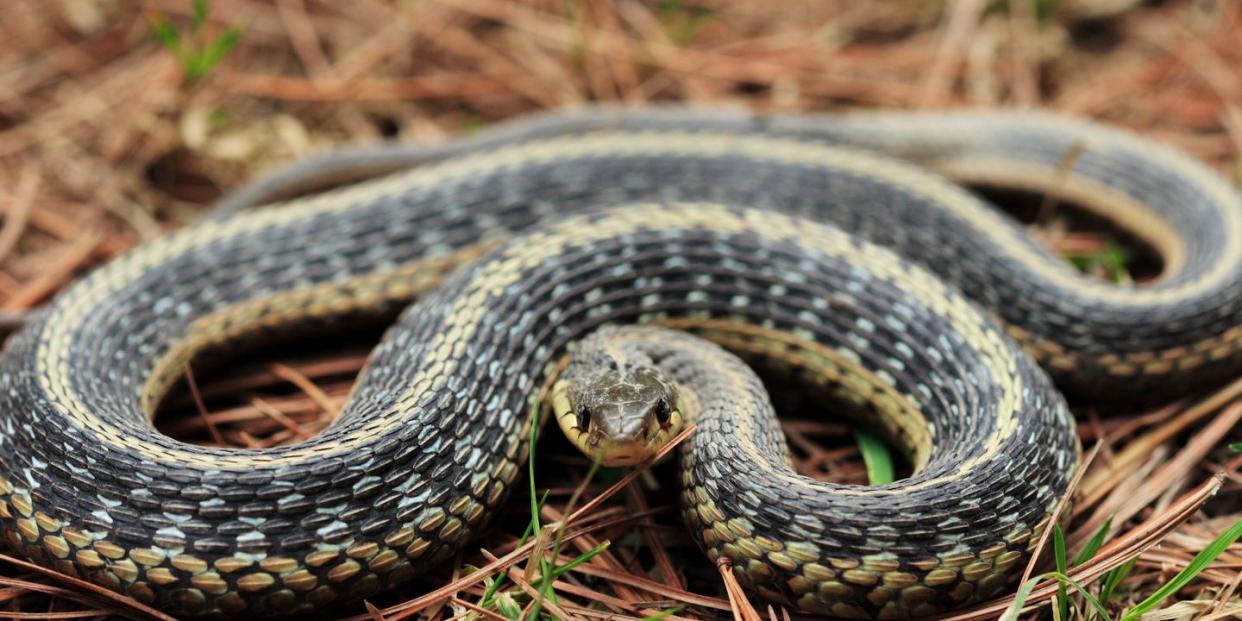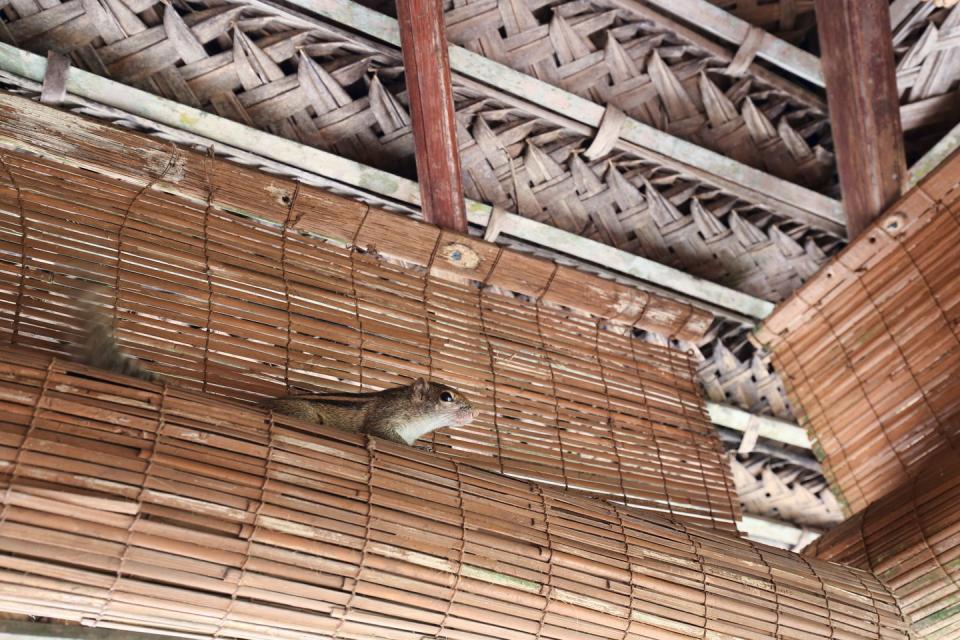This Woman Found Her New House Was Infested With Snakes

When you move into a new house, the biggest stressor you should have is schlepping all your stuff into your new digs or picking out the perfect couch—not fending off your resident snakes. We know, it sounds like a questionable sequel to Snakes on a Plane, but that's exactly what happened to Amber Hall when she moved into her new home.
As she told Denver7 News, the 42-year-old noticed her dogs were barking in her garage a few weeks after they moved in. Lo and behold, she found two holes in the outer wall—and snakes slithering up inside it. (Though most experts believe the reptiles in question are a nonpoisonous garter snakes, Halls's unwelcome visitors are notably bigger than the species typically is.)
After spending $1,000 to humanely remove the snakes, Hall and her family are still wary of their new home. "My kids and I are afraid to sleep in our beds, and afraid to use the restroom because snakes might come out of the toilets," she said. Honestly, we don't blame her. (After all, if this happened to one homeowner, who's to say it could not happen again?) Here's what to do so you don't find yourself living with unwanted guests of the slithering, skittering, or creepy-crawly kind.
First, Stay Calm
According to Jamie Nichols, senior service center manager at Arrow Exterminators, snake infestations are rare. "They generally occur due to an abundance of food sources," he says. "Typically, this is seen in conjunction with a mouse or rat infestation that has been ongoing for a long time." However, you're not in the clear just yet: Nichols says that all homes are susceptible to animal entry—especially those that are located in the middle of the woods.

Then, Watch—and Listen—for Signs
Whether you're looking at homes to buy or rent, or just want to make sure your current house is pest-free, the key is to regularly inspect your home's interior and exterior—including the attic and unfinished spaces like a basement or crawl space. When you give your home a once-over, Nichols says to look for physical signs like holes or trails throughout the insulation, a surge of dead bugs, or droppings from a rodent. "Don't disregard noises you may hear in or around your home," Nichols adds. "You may think the sound is coming from the roof, but it may be coming from the attic."
How to Signal No Pests Welcome
If you're home's only inhabitants seem to be human, how can you keep it infestation-free altogether? You'll want to limit access to potential food supplies. "Keep bird feeders a good distance from your home because, during the night, these can become hunting sites for predators such as snakes and rodents," Nichols says. "Keep trash cans outside and make sure lids lock down tightly, and keep firewood piles and dense vegetation away from your home," because insects and rodents often make homes there. You'll also want to make sure your house is ventilated to keep moisture levels from becoming conducive to insects and termites.
If You See Something, Say Something
Should you ever spot something a little suspicious—shed snakeskins, random droppings, animal tracks—Nichols encourages you to call a professional, stat. "Homeowners can perform the inspections, but getting rid of the problem is a different story," he explains. "A professional is the best practice"—handling, and removing, wild animals, whether they're reptiles, mammals, or insects, requires expertise.
You Might Also Like

